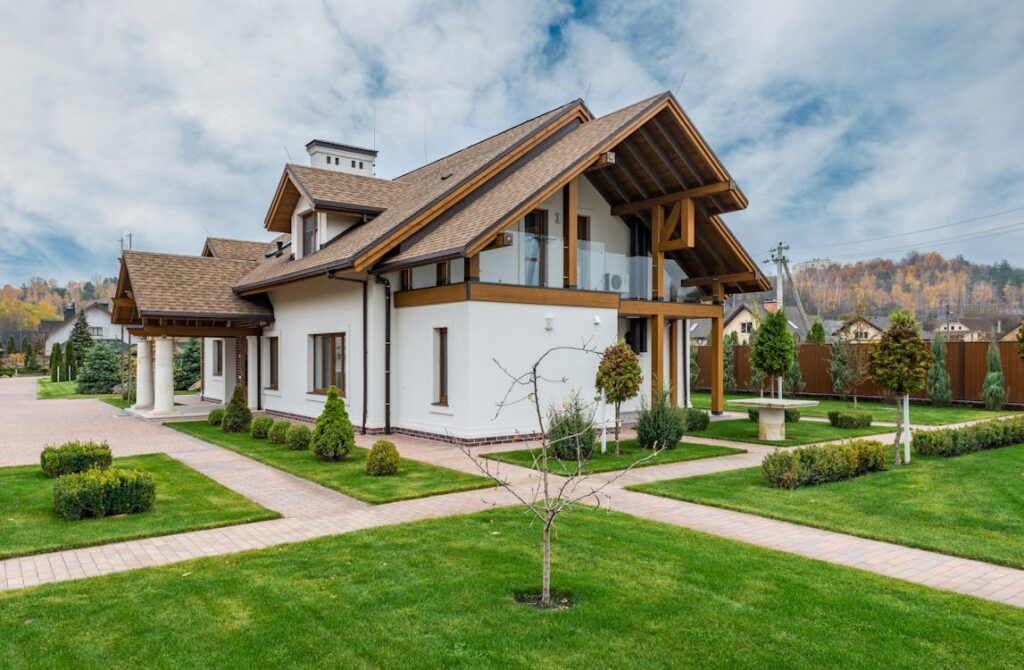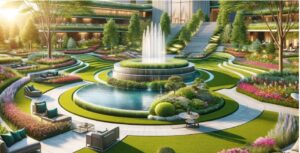
Sprucing up your outdoor spaces is a bit like dressing for the occasion you want to look great, but you also want to be mindful of the impression you leave behind. When it comes to transforming your garden or yard, there are materials that might seem appealing at first, yet they can be the horticultural equivalent of a fashion faux pas. This post is tailored to the eager homeowner or green-thumbed enthusiast looking to make their outdoor haven a sanctuary of both beauty and conscience.
Table of Contents
ToggleSteering Clear of Chemical-Based Treatments
In a bid to keep our flora flourishing, chemical treatments often sneak into our gardening routines like a wolf in sheep’s clothing. While they may seem like the superheroes saving our plants from pesky foes, they can have a Kryptonian effect on the rest of your soil ecosystem. These treatments, laced with nitrates and phosphates, can lead to a flora firestorm, degrading soil quality and affecting plant growth in the long run.
Environmental Ripple Effects
Beyond your garden, the environmental implications are profound. Overuse and runoff of these chemicals can sneak into water systems and spark a ripple effect in the wild. This chemical tide doesn’t discriminate, impacting not only your own garden but also public green spaces, where every blade of grass plays a role in the local ecosystem.
The Pitfalls of Non-Recyclable Materials
Plastic, the love-it-litter-it material of the modern age, has also found its way to the garden. Planted pots, fake grass, and tarp-like sheets have become the staples of outdoor living, yet their presence leaves a non-biodegradable stain on our landscapes. Plastic usage isn’t just aesthetically problematic; it’s an environmental haze that we’re only just starting to see through.
The Garden of Long-Term Sustainability
Imagine your garden as a time-traveller, popping into the future to witness the Earth’s ballet of life. If she were dressed in plastic, the garden’s legacy might be as an archaeological midden for future generations. When planning your garden, consider materials that leave a legacy the planet would be proud to wear.
Invasive Plant Species—a Thorn in Ecology’s Side
Certain plants behave like intruders at a party; they may seem pleasant, yet they disrupt the ecosystem. Introducing invasive species to your garden is like adopting a cute yet poorly behaved pet. While they may seem all right at first glance, they can grow to become your—quite literally—overgrown problem.
The Ecosystem Dance
Local flora and fauna have spent years choreographing the ecosystem dance, and invasive plants often clunk around in steel-toed boots. They upset the natural order, taking up space and resources that native plants need, which can lead to a domino effect on local wildlife populations.
Safer Alternatives to Bedeck Your Outdoor Haven
Fear not, green glam enthusiasts. There is a trove of treasures to adorn your landscape with, without the ethical or environmental hangover. Organic treatments and alternatives, sustainable materials, and community recycling programs are the ethical fabrics from which to stitch your outdoor tapestry.
Organic Treatments—and No, They’re Not Weeds
Think of organic treatments as the natural cosmetics of the garden. They are just as effective in nurturing the flora, without the synthetic fillers that can clog the garden’s pores. Compost and natural pest control options not only keep your outdoors healthy but also contribute positively to the world around it.
Sustainable Practices—Trends That Never Go Out of Style
Beyond treatments, the materials and construction of your garden should have a sustainable backbone. Mulches, gravel, and sustainably sourced timbers add an Earth-friendly touch to your slice of the world. Think of it as dressing your garden in garments that help it breathe and grow over time, rather than constricting its natural rhythms.
We should also talk about materials likejute rope because these are amazing for outdoor spaces. Jute rope is made from natural fibres, making it a sustainable choice for gardeners. It’s also incredibly durable and versatile, perfect for hanging plants or creating stylish accents in your outdoor decor.
All things considered, your landscape choices are like fashion choices—they reflect not only your style and taste but also your values and impact on the world. When designing your outdoor areas, it is important to carefully assess the environment and local ecosystems. By refraining from using detrimental materials and practices, you can develop a garden that is both visually appealing and environmentally sustainable, serving as an ethical haven for you and your community. Are you prepared to enhance your outdoor space? It’s time to plant sustainably and watch your garden bloom in all the right ways.
More Stories
QR Scanner Technology Explained: How It’s Changing the Way We Make Contactless Payments
In today's fast-paced, tech-driven world, the need for quick, efficient, and secure payment methods has never been more crucial. Enter...
Choosing Between Luxury and Budget: Apartment Renting in Qatar
Renting an apartment in Qatar can be both exciting and overwhelming, especially when trying to balance between luxury and budget...
Vancouver Water Damage Restoration: Preventing Mold and Structural Damage
Water damage can be one of the most devastating issues homeowners and business owners face, particularly in a city like...
Batana Oil Benefits: A Hidden Gem for Hair and Skin Care
Batana oil, often referred to as "liquid gold" for hair and skin, is one of nature’s best-kept secrets. Extracted from...
How Evergreen Junk Removal Services are Simplifying Waste Management
Waste management plays a critical role in maintaining clean and organized spaces, whether in homes, offices, or construction sites. For...
Protecting Your Home: The Importance of Timely Roof Repairs in Union NJ
When it comes to maintaining your home in Union NJ, one aspect that should never be overlooked is the condition...


